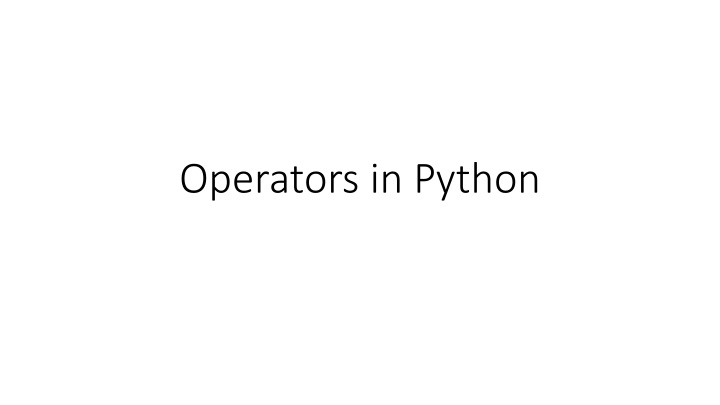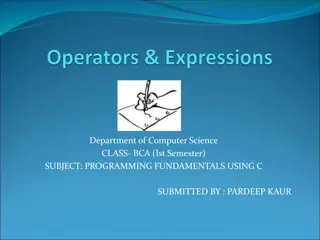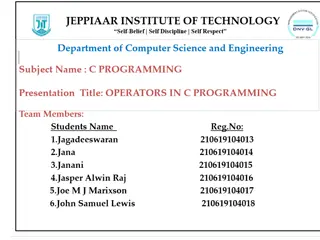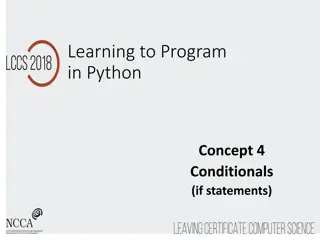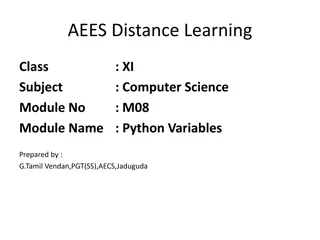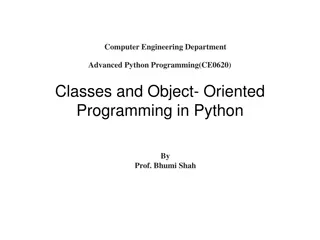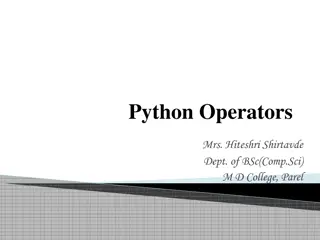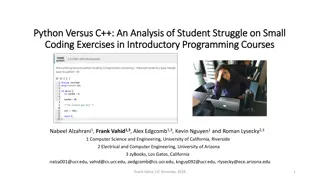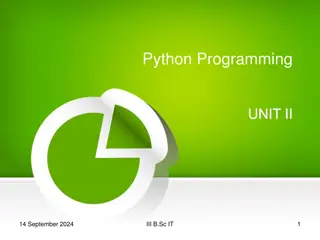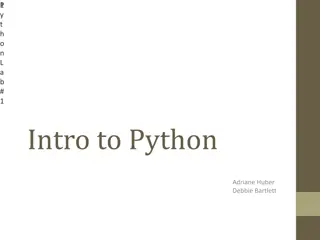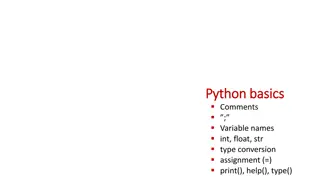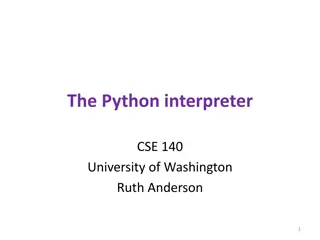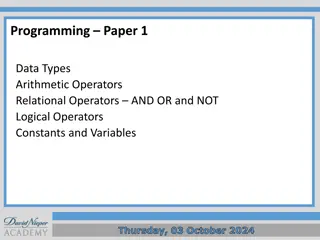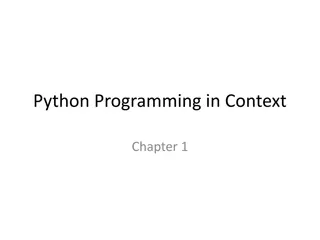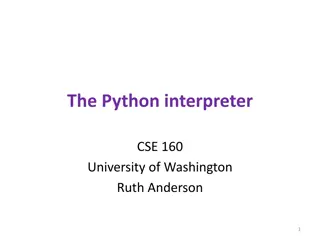Operators in Python
Python operators include familiar arithmetic operators like addition, subtraction, multiplication, and division as well as new operators like modulus, floor division, and exponentiation. Understanding the number of arguments, data types, semantics, and precedence of operators is crucial in programming with Python.
Download Presentation

Please find below an Image/Link to download the presentation.
The content on the website is provided AS IS for your information and personal use only. It may not be sold, licensed, or shared on other websites without obtaining consent from the author.If you encounter any issues during the download, it is possible that the publisher has removed the file from their server.
You are allowed to download the files provided on this website for personal or commercial use, subject to the condition that they are used lawfully. All files are the property of their respective owners.
The content on the website is provided AS IS for your information and personal use only. It may not be sold, licensed, or shared on other websites without obtaining consent from the author.
E N D
Presentation Transcript
Arithmetic operators Some operators in Python will look familiar (+, -, *, /) Others are new to you (%, //, **) All of these do work with numbers and produce numbers
For any operator you need to know These are questions you should ask every time you see a new operator not just arithmetical but any operator! How many arguments does it have and what do they mean What data type are the arguments? (int, float, string, etc.) The semantics of the operator, which is what does it do? What does it mean? What data type does the operator return? NOT always the same as the type of the arguments What is its precedence or priority with other operators?
Example: addition + It has two arguments (we are talking about the addition operator here, not the unary plus sign) The arguments can be ints or floats It produces the sum of the values of the two arguments It produces an integer if the arguments are both integers, otherwise it produces a floating point number It is relatively low precedence, comes after * and /
Other familiar operators Multiplication * works on ints and floats, produces an int if 2 int arguments, float otherwise Subtraction works similarly to multiplication Division / works on ints and floats, but always returns a float Precedence is as in algebra, multiplication and division higher than addition and subtraction If there are two operators in an expression of the same level of precedence, they are executed left to right in the expression a + b + c is done as (a + b) + c
New Operators // and % // is similar to division but always gives the whole number part of the quotient (result of dividing) If give two ints, will give an int, otherwise a float 5 // 4 = 1, 5 // 4.0 = 1.0 (not 1.25) % is the modulus operator, gives the remainder of a division operation If give two ints, yields an int, otherwise a float 13 % 4 = 1 (the remainder when 13 is divided by 4), 8 % 4 = 0 These two operators have the same precedence as multiplication and division
New Operator ** ** means exponentiation Has two arguments a ** b a is the base, b is the power to raise a to 5 **3 = 5 * 5 * 5, 7 ** 2 = 7 * 7 = 49 The precedence is higher than the other arithmetic operators The base or power can be integer or float As usual, if two int arguments, gives int result, otherwise float Is right associative (different from all of the other operators) 4 ** 3 ** 2 = 4 ** (3 ** 2) = 4 ** 9 = 262144
